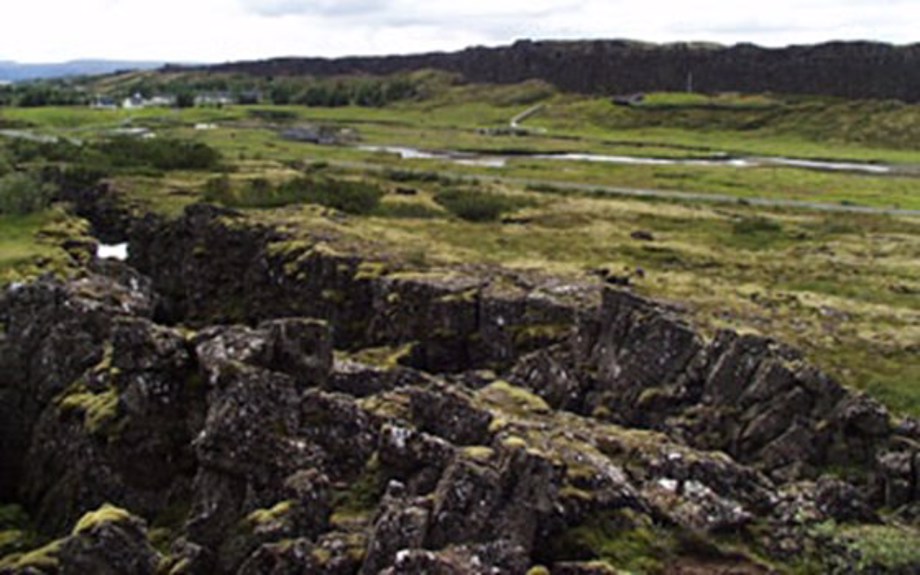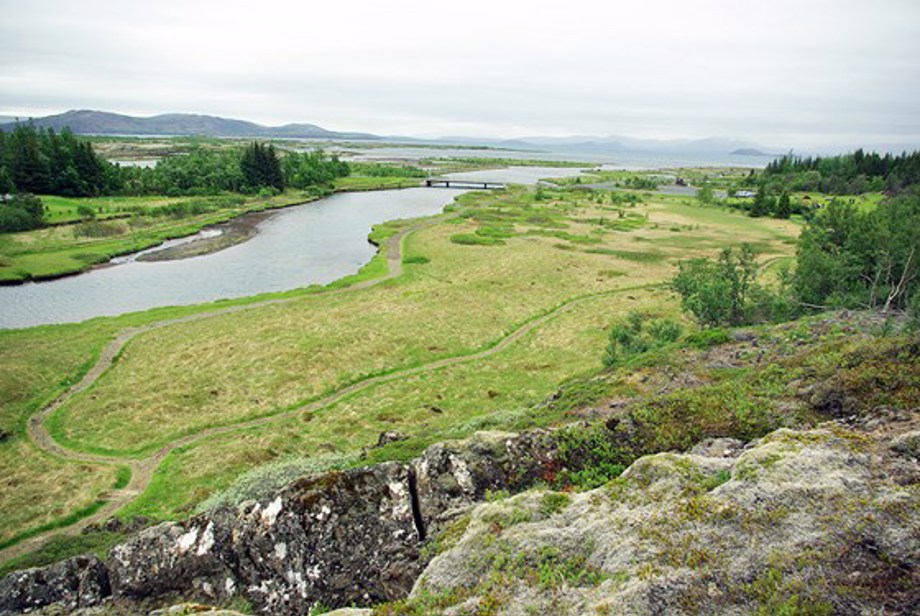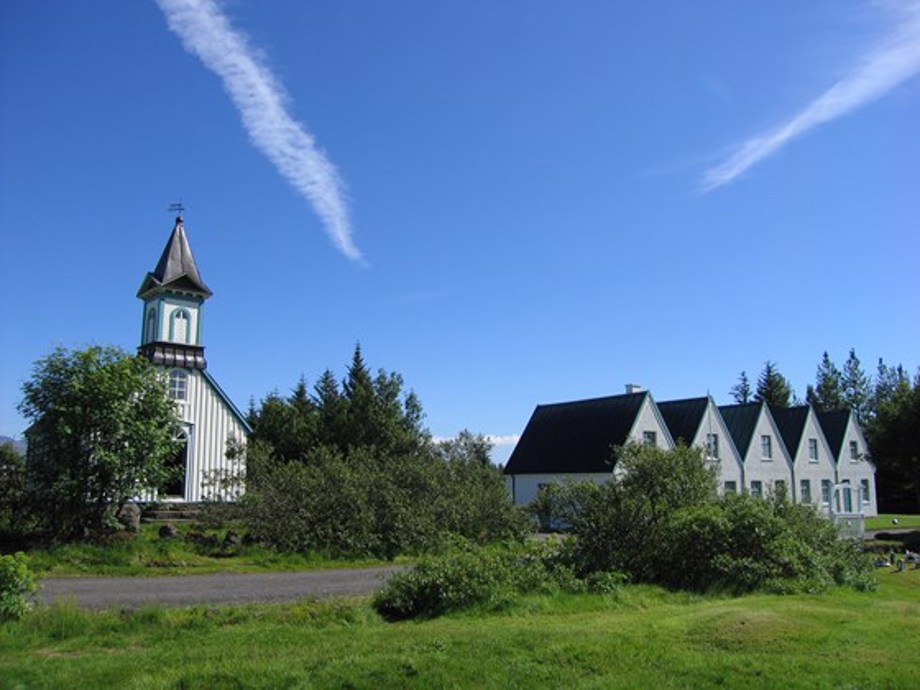The assembly site was the area including the Law Rock (Lögberg) and the Law Council, where the Alþing performed its duties. Its limits were at Kastalar, two lava hills on the northernmost part of Neðri-Vellir; Lake Þingvallavatn in the south; the higher wall of the Almannagjá fault in the west; and Flosagjá - and the faults leading from it - in the east. Within these boundaries, all men were free to take part in the proceedings. Flosagjá is one of the main faults at Þingvellir, with clear water up to 25 metres deep.
Where it faces the main assembly site it assumes a prolonged fork; the eastern branch is named Nikulásargjá. After this was bridged in 1907, visitors began throwing coins into the water below and this part of the fault gradually became known as Peningagjá ("Money Fault"). Peningagjá does not figure in any folk tale, but one can see the coins in the deathly cold water as a symbol of the great natural resource that the water in fact is. Spöngin is the long spit of lava separating the branches of the Flosagjá fault. In the 18th and much of the 19th century, people identified this with the Law Rock from the early days of the Alþing. It is sometimes referred to as the Heathen Law Rock or the Old Law Rock.

Lava field called Kastalar was the assembly sites boundary to the north
Þingvellir National Park
Flosagjá continues in to Skötutjörn and Skötugjá while Seiglugjá, Túngjá and Fjósagjá lie south of Nikulásargjá. A little way to the east, Silfra is largely submerged. Most of the water in Lake Þingvallavatn flows through these faults and beneath many parts of the lava field. Öxará river has been a prominent feature of Þingvellir ever since the assemblies began there. The Sturlunga Saga tells how the river was diverted into Almannagjá to give people at the assembly easy access to fresh water. In the 10th century, duels were held on the islet Öxarárhólmi, until they were prohibited shortly after the Icelandic people became Christian.

At Þingvellir are still multiple remaints to be seen even though some are now covered with vegetation.
Þingvellir National Park
Flooding from Öxará, combined with land subsidence, made it necessary to move the Law Council from its original location. The grassy ruins of booths where the "Þingmen" and other visitors to the assembly stayed can be seen in many places around the site. However, only two visible ruins date from the Commonwealth period. One, known as Njálsbúð, is a vague ruin on the west bank of Öxará, opposite the Þingvallabær residence. The other is Biskupabúð, the largest ruin at Þingvellir, in the meadow north of the church. Other ruins date from the 17th and 18th centuries but are probably built upon the remnants of earlier booths.

The church was built 1859. The oldest part of the houses next to the church were built in 1930. First they started out as office for the park´s supervisor but today are official summer residence for Iceland´s prime minister.
Þingvellir National Park